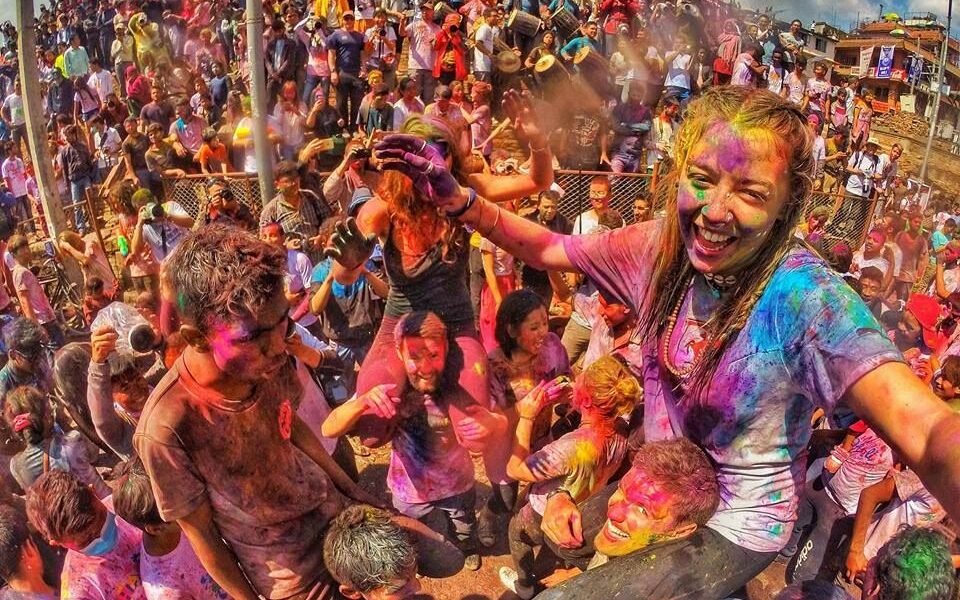Spring not only brings new life but also the festival of Holi, a Hindu festival also known as Fagu Purnima, celebrated on a full-moon day at the end of the month of Falgun, which falls between mid-February and mid-May.
Celebrated by rubbing colored powder on each other’s faces, the use of colored water to spray on each other is also prevelent. The harbinger of good and balmy spring weather, Holi is celebrated all over Nepal but more so in the southern Tarai region. Holi will be celebrated on March 1 in the hills, while in the Terai the festival will be celebrated a day later, on March 2. Legend has it that this festival originated as celebration of the death of the Demoness Holika.
Young ladies enjoying Holi, the Festival of Colors, in Kathmandu, Nepal, on Fagu Purnima.
This wicked woman, who was supposed to be indestructible by fire had made several attempts and failed to kill her nephew, Prahlad, a devoutee of Lord Vishnu. Eventually, she grabbed the boy and jumped into an inferno, confident that the boy would perish in te blaze while she would escape unscathed. But miraculously, the boy remained unharmed while Holika succumbed to the fire which completely destroyed her.
In Kathmandu Valley, Fagu Poornima begins on the first day with the raising of a pole around noon in front of Kumari House, Durbar Square. Holi is popular for the revelry that surrounds this festival as people douse each other with water and colors. Foreigners especially tourists readily take part in the merriment and get drenched in colorful water as there are no rituals involved in playing.
Tourists celebrating Holi – The Festival of Colors, in Kathmandu, Nepal.
On thefinal day, the pole known as Chir is brought down, dragged to Tudikhel and burnt to cinders. The ashes are carried home by devotees as it is believed it will provide them protection against evil.






